How to Make the Unbelievable Believable
Photo by Pablo Heimplatz on Unsplash
My family and I made a major move from North to South when our boys were about to enter their 'tween years.
We were moving from the only home they could remember—where they had friends and snow in the winter and double rainbows over the backyard wetlands in the summer and their children's youth choir and their Boy Scout troop and their only grandfather and Nelson's Ice Cream where a "child's-sized" scoop was bigger than their heads and... and... and....
We were moving them away from all that.
"Toward what?" they rightly wondered. And so did their dad and I.
We could have described where we were going and all the theoretically cool things about the Houston metro area: ethnic diversity, short-sleeves in December, fresh garden tomatoes by Mother's Day, and proximity to the Gulf of Mexico which opens up abundant travel opportunities.
But how real is that description to a ten-year-old?
The theoretical barely compelled me, and I have decades of experience relocating to new places.
They needed more than abstract words.
They needed to experience the benefits so they could look forward to them.
To that end, we kicked off our family house-hunting trip in Houston with a cruise out of Galveston. For a week we cruised the Gulf, stopping in Grand Cayman to snorkle with tropical fish and in Cozumel to swim with dolphins.
So enamored were the boys by this newly discovered undersea world, one of my sons declared he would one day become a marine biologist!
We gave our boys a sense of not only what they were moving from, but toward.
We helped them see, touch, and feel that good things were ahead—even if they had to go through the pain of leaving other good things behind.
This process of moving away and towards describes a sermon's Structure— and the listener's journey, too.
Sermons describe where we are, what we have now, who we are now, and what we're hanging onto now—and then they describe what we're moving toward with its attendant opportunities, joys, and freedoms.
Some of our present situation may be really good—and yet, what God offers is still better.
Some of our current situation is awful, sinful, and weighs us down—and we may not even realize it until we see that what God offers is way better!
Sermons acknowledge the pain of change and also help us taste why moving towards Christ is worth it.
So how can we make God's invitation of the Promised Land, of freedom, of abundantly shared mercy, love, and justice, worth the pain of change? Especially when we're in the process of moving toward God as much as our parishioners are, so we don't always know what's better either?
God's Promises? Get Real.
Why do you trust God's promises?
Something must have brought you to trust that God's promises are not theoretical, but actual, or at least in the making.
You must have experienced or witnessed evidence that we are liberated from our self-made prisons.
You must have experienced or witnessed justice rolling down like waters so that you can put your faith that God's reign is being built, one drop at a time.
You must have experienced or witnessed emerging from what felt like the never-ending tunnel of grief into a shadow of daylight, just enough to hint that there was life yet to come.
Otherwise, preaching would ring false to your ears.
What did you see? What did you hear? What did you touch?
What wounds did you place your hands upon to know that wounds—and scars and healing—happen? Perhaps those wounds were even your own.
If God's resurrection happened in Jesus's body, then God's resurrection happens in every body in ways we can describe, share, and walk towards.
What gives listeners hope that the resurrection is real and that it happened and that it matters, is that we offer them reasons to hope, founded in reality.
Show your listeners not only what they are invited to move from, but also what they are invited to move toward: resurrection light.
These are the kinds of questions the members of our online Backstory Preaching Collectives talk about every week:
How do we make the Gospel real?
How do we preach the Gospel so it comes to life?
Where/how is the best news of the Gospel tangible to our listeners?
How do we declare what we have seen and heard and touched of the Gospel so that it will be spread to the ends of the Earth?
This conversation can only grow richer with more voices and more experiences, which is why we'd love for you to join us in seeking the Good News every week for every sermon.
CollectivES enrollment is Now open!
In addition to helping you preach the good news more compellingly each week, we’re also dedicated to supporting you, the preacher, in connecting to God and building a preaching life that is thriving and sustainable for the life of your ministry.
We hope you'll add your voice to The Collective.

